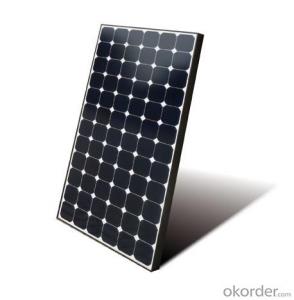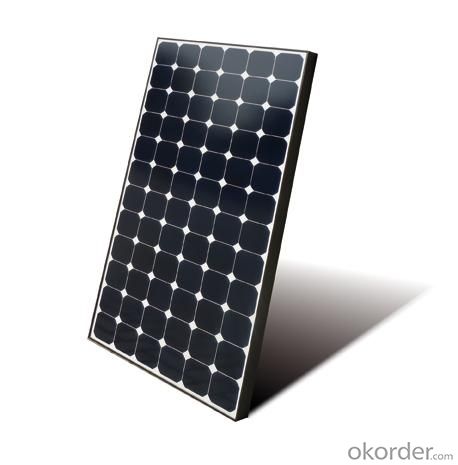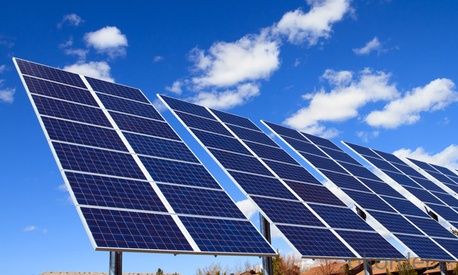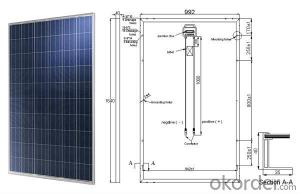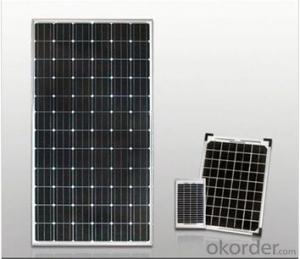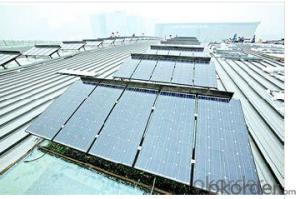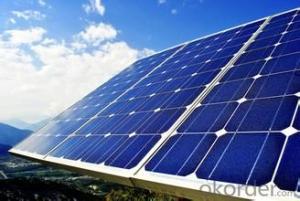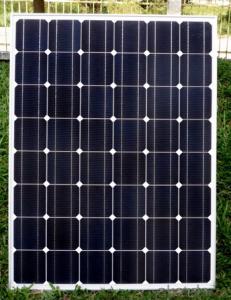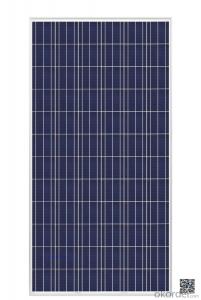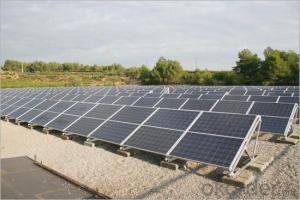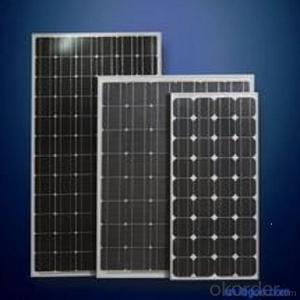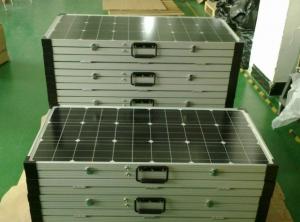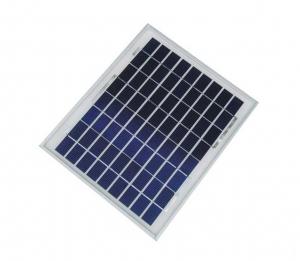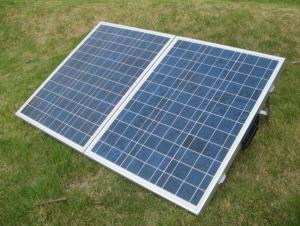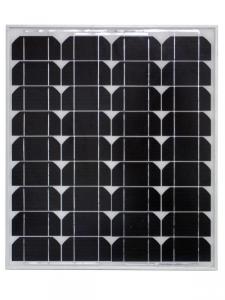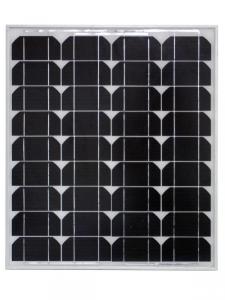A Grade Poly Solar Panel 260W for A Home - Cheapest Price
- Loading Port:
- Shanghai
- Payment Terms:
- TT OR LC
- Min Order Qty:
- 100 watt
- Supply Capability:
- 50000 watt/month
OKorder Service Pledge
OKorder Financial Service
You Might Also Like
Specification
Poly Solar Panel 260W A Grade with Cheapest Price
Product description
60 cell multi-crystalline solar module. 40mm natural anodised frame. IP65 rated Jbox, 1m solar cable and a pair of MC4 connectors.TÜV SÜD,SABS ISO 9001:2008 certified.
Nominal voltage refers to the voltage of the battery that the module is best suited to charge; this is a leftover term from the days when solar modules were only used to charge batteries. The actual voltage output of the module changes as lighting, temperature and load conditions change, so there is never one specific voltage at which the module operates. Nominal voltage allows users, at a glance, to make sure the module is compatible with a given system.
Open circuit voltage or VOC is the maximum voltage that the module can produce when not connected to an electrical circuit or system. VOC can be measured with a meter directly on an illuminated module's terminals or on its disconnected cable.
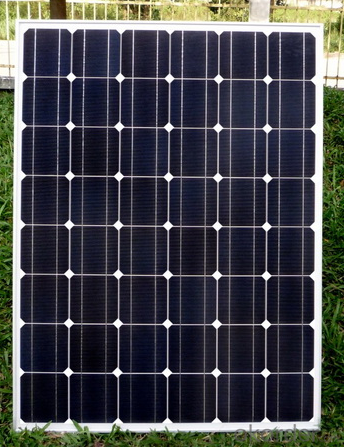
Application
Industrial
Commercial
Residential
Product feather
solar panel refers to a panel designed to absorb the sun's rays as a source of energy for generating electricity or heating.
A photovoltaic (in short PV) module is a packaged, connected assembly of typically 6×10 solar cells. Solar Photovoltaic panels constitute the solar array of a photovoltaic system that generates and supplies solar electricityin commercial and residential applications. Each module is rated by its DC output power under standard test conditions, and typically ranges from 100 to 365 watts. The efficiency of a module determines the area of a module given the same rated output – an 8% efficient 230 watt module will have twice the area of a 16% efficient 230 watt module. There are a few solar panels available that are exceeding 19% efficiency. A single solar module can produce only a limited amount of power; most installations contain multiple modules. A photovoltaic system typically includes a panel or an array of solar modules, a solar inverter, and sometimes a battery and/or solar tracker and interconnection wiring.
Packaging
24-26pcs into carton 312pcs for 20 foot container 712pcs for 40 foot container.
- Q: okay so im lookin 4 an article which explains how practical, wokable, feasible solar panels are. only positive points please :) give me the link. PLZ HELP!!!!
- photograph voltaic panels are as powerful by means of fact the area helps. working example, I checked into photograph voltaic panels for my domicile in northern Indiana and found out that they are very ineffective right here by means of fact we've cloud conceal over 60% of the twelve months. regardless of the some temperture base if we've been in simple terms on the different fringe of Lake Michigan the comparable panels could be greater powerful. My analyze has shown that wind power is lots greater powerful. we attempt to get a zoning variance so as that we can deploy a windmill. in view that your venture is for eco-friendly, undergo in concepts that each and all of the timber used would desire to be bamboo, as that's the main sustainable timber source.
- Q: i don't know very much about it, but can you somehow take off the little solar panels off of the outdoor light things and make it so you can hook an outlet up to it and plug in to it like a phone charger for electricity.
- Little solar panels on lights are very low power. The battery in one such may be 0.5 Amp-hours and .2 V ; it may be different but it should be marked on the panel/battery/manual. An outlet in your house is designed to run on 20 V (typically in N. Am.) and they run on alternating current (AC) whereas the panel generates direct current (DC). (If you don't know the difference, do not worry to much but just understand that they are not directly compatible.) You therefore need an inverter to change DC to AC (and lose some although inverters are now very efficient). But the amount of power generated by those panels is still very small. That is why solar lights are low power (just a few watts in most cases). To make things even more irritating, phone chargers do not work off 20 V AC as you are charging the battery and need a low voltage DC -- which is what the solar panel is giving you. It is almost certain that the voltage from the panel will be less than the voltage required for the phone. The charger is mostly cable but there is a black box incorporated and it should say what the voltage and current output are (the input will be 20V). So you should be able to overcome this not by hooking up the panel to a 20V outlet and then plugging the charger in but by hooking up the panel to the phone directly if you can get enough voltage out of the solar panel (or hook up several) and if you fashion a connection device. They already make them -- solar battery chargers and I am sure you can enter that into a search engine and find loads. Typically the panel alone is much more than a solar light -- which shows the relative power requirements.
- Q: When you add a load resistor to a PV panel (Solar panel) of 00 ohms what happens to the voltage produced from the cellAlso, as the resistance increases, how does this affect the output voltage
- Photovoltaic cells have a load curve that gives the power conversion based on the current drawn. This makes it harder to calculate. For instance, at infinite resistance, the solar cell will have a peak voltage that produces no power (P=I*V=V^2/r). At short circuit, the voltage collapses to essentially nothing and so the power is almost nothing. There is an optimal load (sweet spot) where the resistance applied will draw the most power out of the cell while not overloading it. This measure is either given by the manufacturer or found experimentally. Upon taking a lit panel that has no load and applying a 00 ohm resistance, the voltage will drop. By how much is entirely dependent on the array layout and specific cell characteristics. As the resistance drops from the optimal load point, the voltage collapses fairly sharply. As the resistance increases from the optimal load point, the voltage will rise more at first and then level off to the peak or no-load voltage.
- Q: I need to know how do solar panels work. I need to know what are they made of.
- The term solar panel is best applied to a flat solar thermal collector, such as a solar hot water or air panel used to heat water, air, or otherwise collect solar thermal energy. But 'solar panel' may also refer to a photovoltaic module which is an assembly of solar cells used to generate electricity. In all cases, the panels are typically flat, and are available in various heights and widths.
- Q: I thought that I had a fairly good understanding of watt's law, but i'm starting to doubt myself.If I have a load of 4500watts at 240 volts, how many watts of solar panels do I need, if the solar panels are at 2v?Yes, Yes... I have a charge controller, batteries, etc...So the way I looked at this at first:watts = volts * amps For the load4500 = 240 * xx would be 8.75aFor the power source (each solar panel)00 = 2 * xx would be 8.3a8.75 / 8.3 = 2.25, rounded up = 3So... based on that I came to the conclusion that I needed 3 solar panels...But... then I was thinking. Does it work that way?Or do I need 4500 / 00 = 45, aka 45 solar panels?In other words...If I have a 2v power source, how many watts do I need to drive a load of 4500w at 240v?ThanksMatt
- The easy way is to just use the power values. You need 4500W. Each solar panel delivers 00W (from a value in your working). Therefore you need 4500/00 = 45 solar panels. This is a crude calculation, ignoring efficiencies, voltage conversion losses and losses due to internal resistance. You would probably need quite a few more than 45 panels. ___________________________ I'll explain how to do the calculation your way. Each solar panel delivers 00W with a voltage of 2V. So the current is 00/2 = 8.333A. Each solar panel delivers 8.333A at 2V. But you require 8.75A at 240V panel delivers 00W. To get 4500W, you need: 8.75/8.333 = 2.25 times more panels to increase the current AND 240/2 = 20 times more panels to increase the voltage. So overall you need 2.25 x 20 = 45 panels. Of course if the power output of each solar panel is not 00W, you have to change the above calculation accordingly.
- Q: Can solar panels be installed on a theme park or amusement park?
- Yes, solar panels can be installed on a theme park or amusement park. In fact, many theme parks around the world have already installed solar panels to generate clean and renewable energy. This not only helps to reduce their carbon footprint and dependence on fossil fuels but also saves them money on electricity bills in the long run. Additionally, solar panels can be integrated into the design of the park, complementing its aesthetic appeal and showcasing the park's commitment to sustainability.
- Q: What is the lifespan of solar panel batteries?
- The lifespan of solar panel batteries can vary depending on various factors such as their quality, usage patterns, and maintenance. On average, well-maintained solar panel batteries can last anywhere between 5 to 15 years. However, advancements in technology and improvements in battery design are constantly being made, which could potentially extend their lifespan in the future.
- Q: Can solar panels be installed on mountain huts or lodges?
- Yes, solar panels can be installed on mountain huts or lodges. In fact, mountain huts and lodges are often great locations for solar panel installations due to their high elevation and exposure to sunlight. Solar panels can provide a reliable and sustainable source of electricity in remote mountainous areas, reducing reliance on traditional power sources and minimizing environmental impact.
- Q: Can solar panels be installed on a theater or entertainment venue?
- Yes, solar panels can be installed on a theater or entertainment venue. In fact, many theaters and entertainment venues have started adopting solar energy solutions to reduce their carbon footprint and save on energy costs. The large roof spaces found on these buildings often provide ample space for solar panel installations, allowing them to generate clean electricity and contribute to a greener and more sustainable future.
- Q: Can solar panels reduce electricity bills?
- Yes, solar panels can reduce electricity bills. By harnessing solar energy to generate electricity, homeowners can offset a portion or even all of their electricity consumption from the grid, leading to lower electricity bills.
Send your message to us
A Grade Poly Solar Panel 260W for A Home - Cheapest Price
- Loading Port:
- Shanghai
- Payment Terms:
- TT OR LC
- Min Order Qty:
- 100 watt
- Supply Capability:
- 50000 watt/month
OKorder Service Pledge
OKorder Financial Service
Similar products
Hot products
Hot Searches
Related keywords
